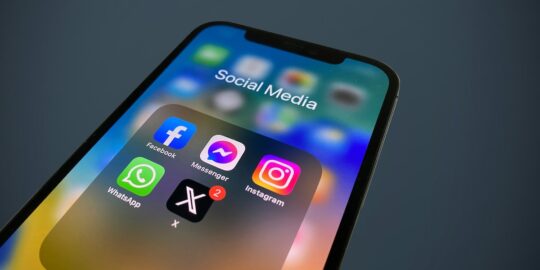
How to Get the Best Screen Mirroring Devices for Classrooms for Your School District
As a result of the pandemic, school district leaders are more aware than ever before of how emerging technologies will affect their schools. One effective method is a smart wireless classroom where you can screen mirror any smart device to engage students while teaching, no matter if you own a Windows, MacBook, iPad, or Android device. By selecting the best screen mirroring devices for classrooms, schools can benefit from new edtech solutions.
It is likely that as an IT administrator, you are wondering how your school district can get access to this technology while staying within budget. The House Education and Labor Committee is proposing that $82 billion should be used for improving school facilities. According to an article of FutureEd: “The U.S. Education Department has approved 22 of the 44 state plans submitted for spending the federal money, clearing the way for some states to begin receiving their full share of funding provided in the American Rescue Plan (ARP).”
Many local school boards haven’t yet decided how to use the most recent round of funds released in March. In most states, districts were required to submit a spending plan and were going to be reimbursed after they used the money. School districts will have until 2024 to spend the stimulus aid.
State legislatures or departments of education cannot limit how localities use the money, as long as the uses are within the bounds of the federal law. Investments made today will impact education decisions well into the future and edtech can be a great opportunity.
Related: Why Invest in Screen Mirroring for Education
Why do Schools Need an EdTech Environment?
Traditionally designed classrooms have their set of problems. Teachers are often relegated to the front of the classroom, tied to either their desks, a projector or a whiteboard. It’s easy for students to disengage and for teachers to feel like they aren’t getting their lesson across.
Screen mirroring enables a user to share their phone, tablet, or computer screen to a wireless display in a classroom. The length of the HDMI cable might be an issue for teachers depending on where they want to teach. Teachers and IT are also restricted to using an HDMI-compatible laptop.
By using wireless screen mirroring, teachers do not have to worry about HDMI cords, dongles or incompatible devices. Furthermore, it eliminates the necessity for them to be tied to their desks or a projector.
Features to Look for in Screen Mirroring Solutions
There are several factors to consider when it comes to broadcasting the lesson’s content to a larger screen. As an IT manager or administrator in your school district, you will want to verify the following capabilities:
1. Rapid Connections
Setting up the classroom technology is faster when the platforms are wireless. In just seconds, the teacher can connect their computer. No syncing issues or delays. With the best screen mirroring devices for classrooms, teachers can get to their lessons sooner and keep students engaged.
2. Provides Seamless Connectivity
Whenever you’re deciding on your next device purchase, you’ll want to know how easily it connects with the type of device where the content is coming from. To connect devices to a display, do they use Bluetooth or WiFi? Do you need a special application or software program, or even hardware?, or even if it is a solution made for educational institutions, involving a CTO-managed infrastructure installation for entire districts? To guide your decision, be sure to consider how you will use screen mirroring.
Related: The five advantages of Software as a Service (SaaS) in education
3. Greater Efficiency and More Flexibility
With the best screen mirroring devices for classrooms teachers can move away from PowerPoint. If you were a chemistry professor, typing formulas with subscripts and superscripts would be incredibly difficult. Being able to handwrite things on OneNote and project it on a screen, and then the students being able to reference it again is a very useful feature.
Teachers can also share their annotations and modifications much faster. A secondary explanation of a concept can happen instantly as opposed to the next day. That gives teachers time to work on additional examples, or extend the students’ understanding in a different way, or talk about it from a different perspective.
4. Do More Things in Less Time
There are direct video play features in best screen mirroring devices for classrooms, which allow teachers to mirror their screens and still work privately in a separate window. They can play a video, go back to their computer and do things without disrupting the students’ activity.
5. Greater Collaboration
Screen mirroring devices for classrooms give teachers a more effective way to include all students in the lessons. By allowing them to collaborate through the sharing of their screens, students form relationships, learn how to provide constructive feedback, and help each other learn the material in a more interactive way.
6. Works With a Variety of Devices
The best screen mirroring devices for classrooms can work with a variety of sharing devices because they were designed specifically for use in an education environment. A device-agnostic screen-mirroring solution means students can participate despite the type of device they’re using. Students can still connect and share their work.
“In addition, the pandemic and its necessity of virtual and hybrid instruction have presented opportunities for professional development as some educators quickly learn and adapt to utilizing new and varied educational technology to support engaging and effective instruction. These lessons may be carried over as teachers, early childhood providers, and staff return to the classroom and in-person services while continuing to make use of integrative technology.” as explained by the Best Practices ClearingHouse, an official website of the US government.
We’ve all learned now how to share a screen. Even elementary-age children can effortlessly share, but technology is allowing teachers to make the in-class sharing even better.
To support the teaching methods of their school districts, IT managers can choose to use screen mirroring devices in classrooms. Also, it is a great time to make use of the American Rescue Plan (ARP) that is available in your state.
Whether you work for an IT department or in a classroom, you want seamless integration, software options, and more when choosing the best screen mirroring devices for classrooms. Request a demo from Vivi to learn how the solutions offered can bring interactivity to your education system.



